Kupopo!
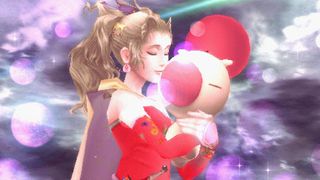
It's okay everyone, you can stop holding your breath: after Square-Enix's impromptu vote on whether Moogles should appear in Final Fantasy 15, the fans answered back with a resounding YASS!! And good thing, too. It only feels right, since those marshmallow bears with cherries on top have been around since the beginning.
And for those of you who voted against Moogle-clusion because you don't care about some glorified teddy bears with antennas, know that Moogles are far more than just some cosmetic fluff - they've grown with Final Fantasy from its earliest days, and to know the story of Moogles is to know the life of Final Fantasy. Here you'll find every step of that fabled transformation, so you can watch nearly thirty years of evolution happen right before your eyes. Plus, it's impossible to keep this much cute contained.
The first Moogle (Final Fantasy 3)
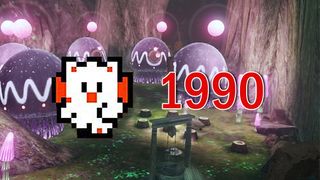
While rumor has it Moogles could be found in scrapped design documents even before Final Fantasy 2 was released, their first official appearance is in Final Fantasy 3 (the actual FF3, not the repackaged version of FF6 that the US got back then). They act as the world's cuddliest bodyguards to master wizard Doga, totally ruining his super-serious image. While they already had the little wings and bear shape, they lacked the defining pom-pom and used nya (the Japanese equivalent of meow) to punctuate their sentences rather than kupo. The 2006 DS remake altered the Moogles to make them look more like their contemporary selves, so unless you got a secret Japanese copy, you may never have seen these blocky little cat creatures up close.
The first Moogle outside Final Fantasy (Secret of Mana)

Moogles may be a staple of Final Fantasy, but they've had plenty of time to moonlight in other Square games. Even back in the early 90s they spread their tiny wings and appeared in the original Secret of Mana, where they turn to the protagonists for help defeating evil creatures that have taken over their village. Looking more catlike than ever (only a set of wings and a recognizable language patterns distinguish them from actual felines), they have an utterly different palette from the original Moogle design. In another reality where Secret of Mana reigns, Moogles just look like panthers with wings.
The first playable Moogle, the first talking Moogle, the first Moogle with a pom-pom (Final Fantasy 6)
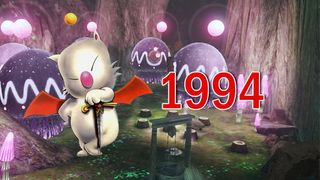
The basic design for the Moogle really solidified with the release of Final Fantasy 6, and the American version even put one right on the box. That's actually a specific Moogle named Mog, leader of his kind and the first Moogle (in-universe and from a meta perspective) to ever speak a human language. He lets it go to his head a bit and can be quite bossy, but he's kind at heart, and joins the party after helping Locke save an amnesiac Terra from guards perusing her in the Narshe Mines. He's also a visual trendsetter, the first Moogle to feature the chubby-bear look, closed eyes, and a pom-pom. Admittedly, it's yellow, but he has to leave something for future generations to improve on.
The first weird Moogle (Final Fantasy 7)
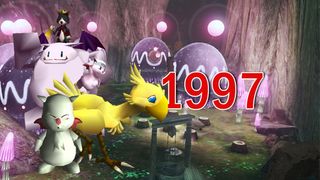
Things got a bit weird for Moogles in FF7, which decided to experiment with what one of those puffballs would look like in 3D. Our heroes encounter familiar-looking Moogles (officially called 'Mogs') in the Mog House section of the Gold Saucer, and as part of the ChocoMog summon, riding into glorious battle on choco-back. Aside from missing pom-poms and having a bit of extra chest-fur, they look just like Mog from FF6. But then there's also Reeve Tuesti's version of a Moogle, which makes up the bottom three-quarters of Cait Sith. A creature that looks like it was spliced with caveman DNA - complete with hulking body and sabertooth tiger teeth - Reeve's moogle is actually a semi-intelligent robot designed to act as the brawn for the two-puppet team. Reeve either has a wild imagination or has never seen an actual Moogle in his life.
The first hidden Moogle (Final Fantasy 8)
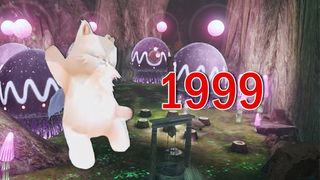
Since FF8 was already busy trying to make Moombas happen, it didn't really have space for Moogles. In fact, Moogles were completely absent from the game, unless you could get your hands on a device called the PocketStation and a game called Chocobo World. The end goal of that game is to help Boko the Chocobo find his friend MiniMog - a catlike Moogle with no headgear that looks more like the Secret of Mana Moogle than its more recent contemporaries. Once you did, you could transfer MiniMog into FF8 as a summon that heals the party by doing an adorable dance. Unfortunately PocketStations were never released outside of Japan, but their functionality was left in all localized versions of FF8, so there's still hope if you desperately want MiniMog to be your friend.
The first unique Moogles (Final Fantasy 9)
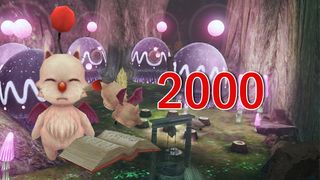
FF9 is well-known as a return to form and last farewell to the Final Fantasies of old, so it only feels right that its Moogles take on the form born in FF2 and honed through FF6. But unlike in the series' previous entries, the Moogles of FF9 have all sorts of different looks and personalities - the closed eyes, wings, and pom come standard, but different Moogles accessorize with headbands, scruffs of hair, and different colored fur. That made it possible to introduce new unique Moogles, like head delivery Moogle Artemicion and bandana-clad merchant Stiltzkin, who would become recurring characters in future games. And in one final tweak, all the Moogles can talk and interact with your party regularly, even delivering mail and acting as save points by scrawling down your adventures in a book the size of their whole bodies. Either that tome is way lighter than it looks, or they're body-builders.
The first inanimate Moogle (Final Fantasy 10)
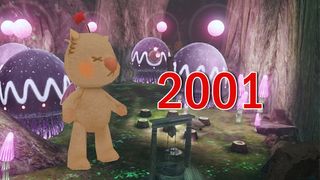
Compromising between including silly fantasy elements and creating a Very Serious story, FF10 left Moogles out in the cold once again, but still tried to pay homage to the little guys. The compromise came through black mage Lulu's collection of occult dolls, which take on the form of various Final Fantasy critters, the Moogle included. Lulu's Moogle sticks with the classic look, bar a few stitches and some eerie X's over its eyes, but it doesn't have nearly the life of Moogles from previous games. It has no life at all, actually, and will stay completely stationary until Lulu bewitches it to perform magic with her, or run up and give her enemy and good kick in the shin.
The first Moogle costume (Final Fantasy 10-2)
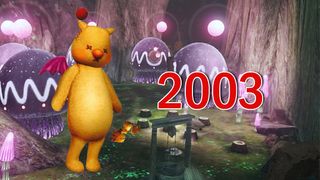
The world of Spira sticks to its guns on that 'no Moogle' rule, but pulls another clever trick to get them in anyway. FF10-2's Moogle comes in the form of a dressphere (an item that determines job class) that you get for collecting the full dressphere set: the Mascot, which decks each girl out in the sort of comically large mascot outfit that kids at high school football games throw popcorn at. Yuna has the honor of representing the Moogle, which looks similar to Lulu's old doll, only with a little extra paunch. Don't be fooled by its silly appearance: the Mascot is actually the strongest dressphere in the game, giving each character unique abilities and drastically upping their stats. Maybe we were just underestimating Moogles all along.
The first rabbit-Moogles in the main series (Final Fantasy 12)

Doggedly sticking to the Moogle design laid down in Tactics Advance (rabbit-like ears, human posture and clothes, basically completely different with only the pom to help you make the connection) FF12 gives its Moogles a lot more visual variety and a unique style to fit their personalities. The game also plunges deeper into Moogle society, explaining that they integrate into human cities much more effectively than other races, as their cultures are very similar. While they have as many careers open to them as humans (the leader of your monster-hunting clan is a Moogle, and you chat with his sister to rent chocobos), they're naturally gifted with technology and machines, and only they have the expertise and skill necessary to build airships. Market officially cornered.

